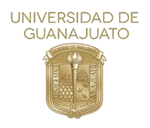
Guanajuato, Gto., July 19, 2019.- What do we do? Molecules, but not random, we're always thinking about what potential applications they have. This is how Dr. Eduardo Peña Cabrera describes his work in the Department of Chemistry of the University of Guanajuato, which recently led him to obtain a patent for the creation of molecules with which you can, among other things, evaluate the quality of food and even detect drugs in drinks.
"In our laboratory we have headed to two major fields: one could be applications in electronics and the other the medical or biological application. In both cases it is always a question of landing in a benefit to society", details the academic, who has collaborated for 24 years in what is now the Division of Natural and Exact Sciences of the Guanajuato Campus.
In exposing what is the line of research that he has focused on for the last 13 years, the doctor in Organic Chemistry states: "We work with color, which is a very important property in nature both from an aesthetic point of view and from the point of view of the biological point of view", because it enables such important phenomena as pollination or mating, and thus, the reproduction and preservation of species.
In their lab they develop fluorescent coloring molecules and monitor their transformations by changing color. "With a single base molecule, if we remove or place more organic groups, different atoms, they're going to emit a completely different visual response. That's the value of the compound we're reporting on the patent, being able to prepare these derivatives that have that completely different response."
Thus, when changing color in the presence of analytes (agents to be detected), it is possible to know, for example, whether there are toxic metals in drinking water sources, toxic pesticides in fruits and vegetables, or drugs in beverages. You can even determine the quality of foods such as milk, fish and meats.
The applications of the patent are multiple: environment, health, food, electronics, among others, says Dr. Eduardo Peña, expert in Organometallic Chemistry, level 3 in the National System of Researchers and who received the 2017 Medal awarded by the International Association of Advanced Materials (IAAM) for his contributions in this area.
The patent, clarifies, is part of a multidisciplinary project in which physicists, biologists, and scientists from different other areas collaborate, but mainly there is a collaboration with a photo physics group of Bilbao, "they are the ones who measure the properties and we indicate what applications we can route them to," said Dr. Peña Cabrera.
In addition, he indicated that a collaboration was recently initiated with the Biology group of Dr. Héctor Mora and Dr. Bernardo Franco of the UG's own Division of Natural and Exact Sciences to investigate what the effect of those compounds is within a cell and see if there exists a possibility of application.
Teamwork
On the process that allowed them to obtain the patent, Dr. Eduardo Peña stated that, once the opportunity to protect and commercialize the invention was identified, they relied on the advice of the experts of the University of Guanajuato, who guided them to to complete the registration.
Dr. Ismael Valois Escamilla, a professor who was doing a postdoctoral stay in the research group led by Dr. Peña Cabrera, and César Fernando Azael Gómez Durán, a student who was finishing his doctorate, also spoke in the patent.
One aspect that Dr. Eduardo Peña emphasized is that the processes they perform to make these compounds are "in most cases, very simple operations in the laboratory, so that in the preparation of those compounds are involved guys from the social service, and they play an excellent role."
In this way, from the first semesters of the bachelor's degree the UG students are attracted by such projects, "and they end up doing brilliant things in research... those who like to do their social service with us, then the professional and research stays. All that information they collect serves them for their theses," so they are titled practically when they finish their credits.
Photo gallery










